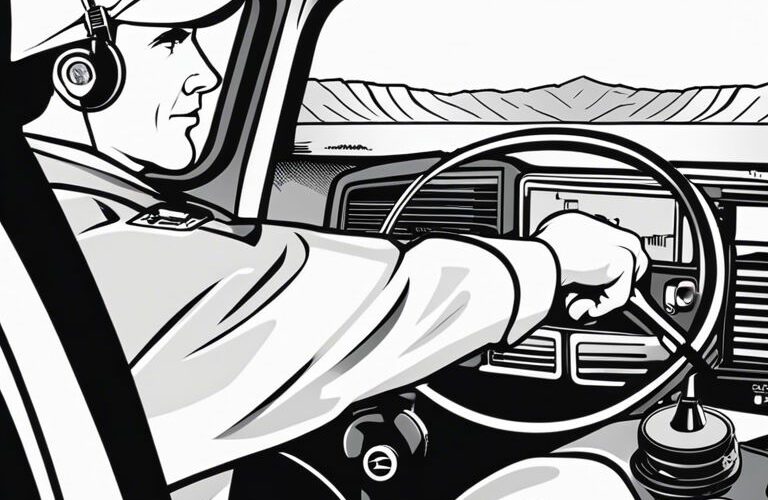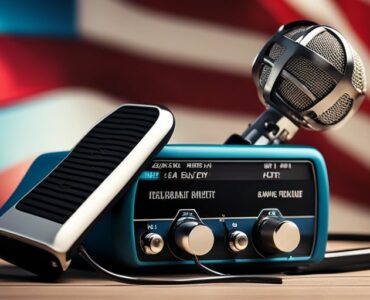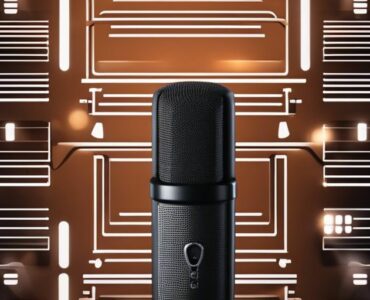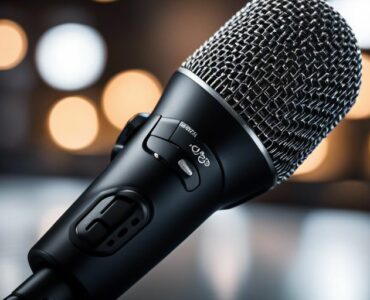Positioning your CB microphone correctly is crucial for optimal performance and clear communication on the road. When set up improperly, your microphone can cause interference and distortions to your transmissions, potentially leading to dangerous miscommunications. To ensure that you are getting the best out of your CB radio, it’s important to know the proper way to position your microphone. In this blog post, we will cover the essential steps and tips for positioning your CB microphone for optimal performance and effective communication during your travels.
Table of Contents
Key Takeaways:
- Position the microphone close to the mouth: The microphone should be positioned approximately 1-2 inches away from the mouth to ensure clear and consistent audio transmission.
- Angle the microphone correctly: The microphone should be angled towards the corner of the mouth to reduce plosives and minimize background noise.
- Use a microphone clip or mount: Secure the microphone in place using a clip or mount to prevent it from moving or shifting during use, maintaining optimal positioning.
- Adjust the microphone level: Use the microphone’s adjustable arm or gooseneck to fine-tune the position for maximum efficiency and comfort.
- Test for optimal performance: Experiment with different microphone positions and test the audio output to determine the best placement for optimal performance.
Fundamentals of CB Microphone Positioning
Obviously, the proper positioning of your CB microphone is crucial for optimal performance. Whether you are a seasoned trucker or a novice CB enthusiast, understanding the fundamentals of CB microphone positioning is essential for clear and efficient communication on the airwaves.
Understanding Microphone Types
When it comes to CB microphones, there are various types available, including handheld, noise-canceling, and dynamic microphones. Each type has its own set of features and advantages, and choosing the right one for your setup can significantly impact the clarity and effectiveness of your communication. Handheld microphones are convenient for their portability, while noise-canceling microphones are designed to minimize background noise and enhance voice clarity. Dynamic microphones, on the other hand, are known for their durability and ruggedness, making them ideal for outdoor and off-road use. Perceiving the differences between these microphone types and selecting the one that best suits your needs is key to achieving optimal performance.
Assessing Your CB Radio Environment
Before settling on a specific positioning for your CB microphone, it is important to consider the environment in which you will be operating. Factors such as noise levels, temperature, and potential interference from other electronic devices all play a role in determining the optimal microphone positioning for your setup. Additionally, understanding the layout of your vehicle or workspace can also impact the effectiveness of your CB microphone. By taking these variables into account, you can ensure that your microphone is positioned in a way that maximizes its performance and minimizes any interference or distractions.
Practical Guidance for Microphone Placement
Any professional knows that proper microphone placement can make or break a performance. Your CB microphone is no different. When you position it correctly, you ensure optimal performance and clear communication. Here are some practical tips to help you get the most out of your CB microphone.
Optimal Distance and Angle
When positioning your CB microphone, it’s essential to find the optimal distance and angle for clear communication. You want to ensure that the microphone is close enough to pick up your voice clearly, but not so close that it distorts the sound. The ideal distance is typically 1-2 inches away from your mouth. As for the angle, it should be positioned directly in front of your mouth to capture your voice accurately. Experiment with different distances and angles to find the sweet spot that works best for you.
Reducing Background Noise
One of the challenges of using a CB microphone is dealing with background noise. Fortunately, there are some strategies you can use to reduce unwanted noise. First, make sure to position the microphone away from sources of noise, such as air vents or open windows. Additionally, consider using a noise-canceling microphone to filter out background sounds and focus on your voice. By minimizing background noise, you can ensure that your message comes through loud and clear.
Remember, the key to optimal CB microphone placement is finding the right balance between distance, angle, and background noise. By following these practical guidelines, you can ensure that your CB microphone delivers the best performance possible. For additional insights on mic placement, check out this helpful resource on How to Mic a Choir – With Sound Samples!
Maintenance and Care for Your CB Microphone
Despite being a durable piece of equipment, your CB microphone still requires regular maintenance and care to ensure optimal performance and longevity. By following a few simple steps, you can keep your microphone in top condition and avoid potential issues down the line.
Regular Maintenance Procedures
One of the most important maintenance procedures for your CB microphone is keeping it clean. Dust, dirt, and grime can build up over time, affecting the performance of the microphone. Use a soft, damp cloth to wipe down the exterior of the microphone regularly. Additionally, check the connections and cables for any signs of wear and tear, and replace any damaged parts as needed.
Best Practices for Longevity
To ensure the longevity of your CB microphone, it’s important to handle it with care. Avoid dropping or mishandling the microphone, as this can cause internal damage that may not be immediately apparent. When not in use, store your microphone in a safe place where it won’t be subject to excessive heat, moisture, or other environmental factors. Additionally, be mindful of how you handle the microphone during use, and avoid overly aggressive or forceful actions that could potentially damage the internal components.
Troubleshooting Common Problems
Not experiencing the optimal performance from your CB microphone can be frustrating but common problems can often be easily resolved with a few troubleshooting steps. Below are two of the most common issues and their solutions.
Addressing Poor Sound Quality
If you are experiencing poor sound quality from your CB microphone, the issue may be related to the microphone’s positioning or the microphone itself. Ensure that the microphone is positioned close to your mouth, about one inch away, and angled slightly upwards. Additionally, check for any obstructions or debris that may be affecting the microphone’s performance. If you still experience poor sound quality, consider replacing the microphone with a higher quality model, as this may resolve the issue.
Solutions for Intermittent Transmission Issues
If you are encountering intermittent transmission issues with your CB microphone, the problem may stem from a loose connection or a faulty microphone. Start by checking all the connections to ensure they are secure and free of any damage. If the issue persists, you may need to replace the microphone cable or troubleshoot the connection points for any potential issues. Additionally, consider testing the microphone on a different CB radio to determine if the issue lies with the microphone or the radio itself.
Properly Positioning Your CB Microphone for Optimal Performance
Hence, it is crucial that you position your CB microphone correctly to ensure optimal performance. By positioning the microphone at a distance of about 2 inches from your mouth and slightly off to the side, you can minimize background noise and ensure clear and crisp communication. Additionally, make sure to avoid covering the microphone with your hand or any other objects, as this can also affect the quality of your transmission. By following these simple positioning guidelines, you can maximize the performance of your CB microphone and effectively communicate with others on the airwaves.
FAQ
Q: Why is the positioning of a CB microphone important for optimal performance?
A: The proper positioning of a CB microphone is crucial for clear and effective communication. Placing the microphone correctly ensures that your voice is transmitted clearly and that background noise is minimized.
Q: How should I position my CB microphone for optimal performance?
A: To properly position your CB microphone, hold it approximately 1-2 inches from your mouth at a slight angle. This allows for clear transmission of your voice without picking up excessive background noise. Ensure that the microphone is not too close or too far from your mouth to avoid distortion or low audio levels.
Q: Are there any additional tips for maximizing the performance of a CB microphone?
A: Yes, there are a few additional tips to consider. Avoid covering the microphone with your hand while speaking, as this can muffle the sound. Additionally, speaking directly into the microphone and enunciating clearly can help to improve the overall performance. Lastly, keep the microphone away from sources of interference, such as other electronic devices, to ensure optimal communication.











Add comment